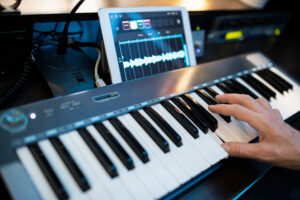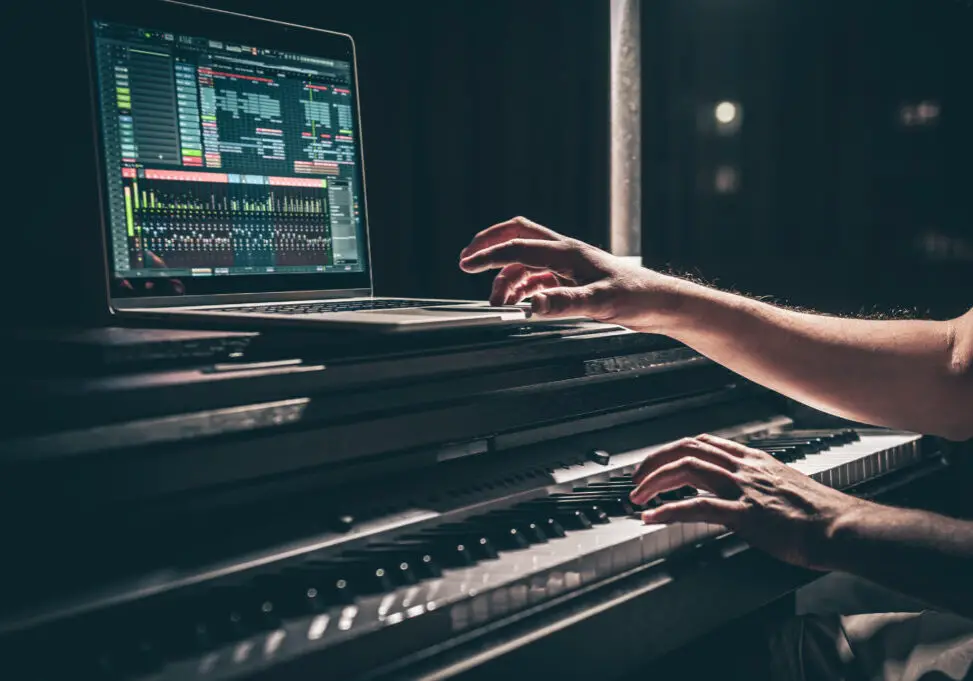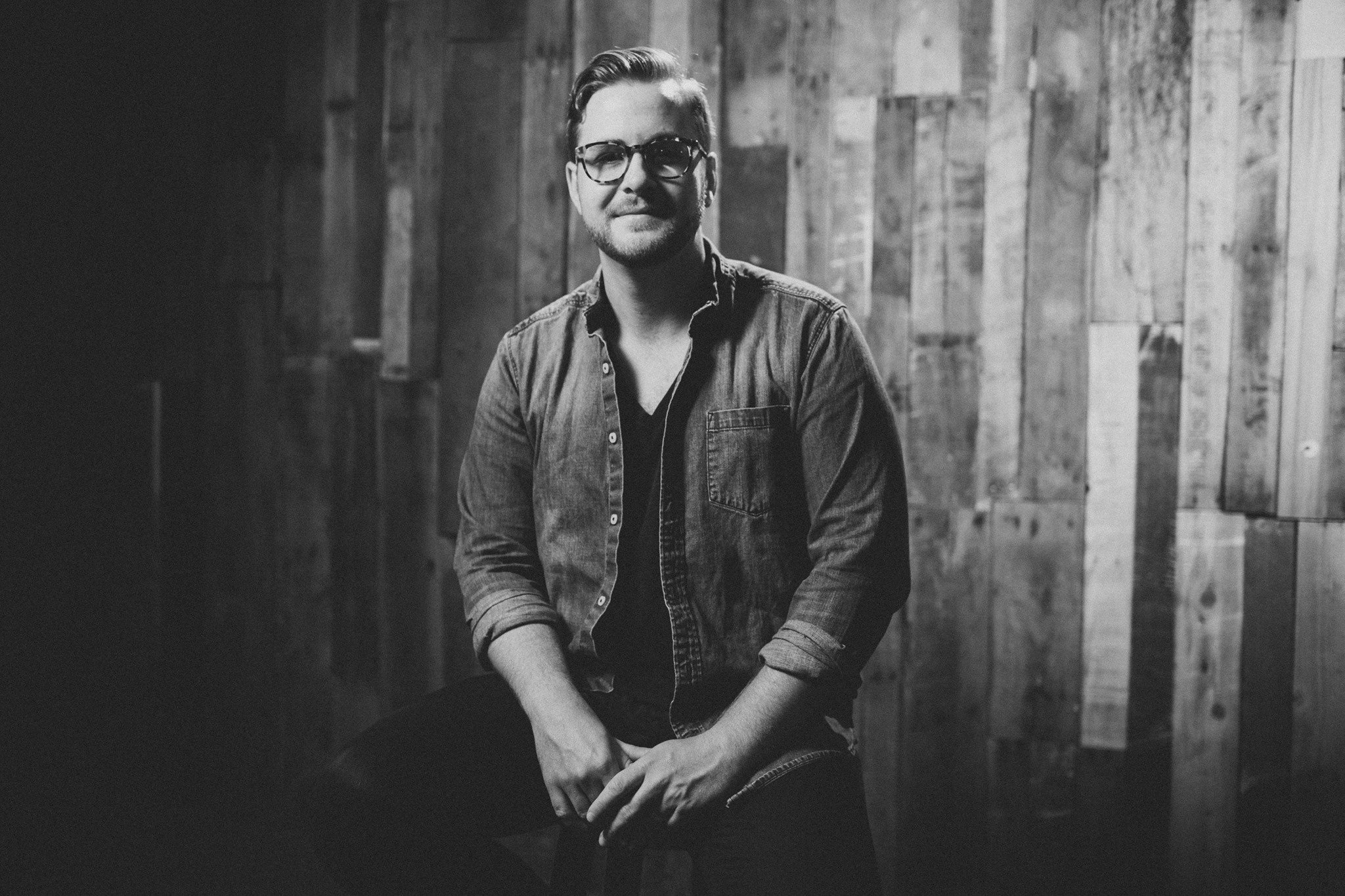Turning a song you’ve written into a professional, studio-made demo is a lot more complicated than you might think.
You’ve got your chord progression, your lyrics, and maybe some extra ideas for additional instrumentation bouncing around in your head.
However, that’s just the beginning when it comes to producing music.
Even if you’re already trying to become a music producer, taking someone else’s vision and properly mixing and engineering it is a complex task.
Luckily, I’ve spent hundreds of hours in studios, working both as a songwriter and a producer.
I know both sides of the process, and I’ve learned some valuable lessons along the way.
So, if you’re looking to sharpen your skills as a producer, or even if you’re just getting into this world for the first time, read on!
Disclosure: Some of the links below are affiliate links. This means that, at zero cost to you, I will earn an affiliate commission if you click through the link and finalize a purchase.
What is Music Production?
Music production is a pretty broad task, and it can involve anything from helping write the actual song, to recording, mixing, and mastering the track.
All of those tasks are individual parts of the creative process, and they have their own individual sets of jargon (which we’ll talk about later).
It’s a pretty broad set of skills needed to produce music, but it’s also not necessary to become skilled in every detail of production.
Generally speaking, most music producers focus primarily on recording, mixing, and engineering music (though, once again, not always).
Recording music, mixing it, and engineering it, all require their own set of tools, so let’s look at what you’ll need before you start creating your next hit.

What Kind of Gear is Used in Music Production?
Music production has a rather unfortunate reputation of being an expensive hobby, which is both true and untrue.
Yes, there’s a lot of fancy DAWs, sample libraries, mics, and instruments out there that you can shell out hundreds or even thousands of dollars for, but you can also get away with far cheaper options.
Below, I’ll go over the basics of what you’ll need to at least get started, as well as a few low-end and high-end options you can go for.
1. DAWs (Digital Audio Workstations)
Nowadays, a lot of the mixing and mastering that an album requires can be done through a DAW, or Digital Audio Workstation.
These music recording platforms are like having a studio in your laptop, and they’re one of the main reasons making music professionally is so accessible.
There’s a wide variety of different DAWs out there, from the uber complex to the streamlined and simple.
If you’re looking for something cheap (as in free!), simple, and extremely easy to use, I’d recommend Audacity.
Audacity is a multi-track splicing and editing tool used primarily for making cuts in music or sound files.
It’s pretty bare bones, but if you’re just starting out and trying to get the feel of multi-track recording, this is an excellent place to start.
And while it’s technically more of a digital audio editor than a workstation, you can still get pretty far with this little app.
The next step up from there would be GarageBand, which is free if you’re a Mac user (if you use Windows, CakeWalk is another great option).
Now that you’ve learned how to walk with Audacity, with these you can start to jog.
GarageBand is a full DAW, complete with preset sample libraries and mixing/mastering interfaces.
It’ll feel like a huge leap compared to Audacity, but there’s still even better options.
If you are able to invest financially in your music, Reason and Logic are some of the best options out there. This is where you can start to run.
These DAWs give you control over very minute details of the sound and engineering in your songs, which if you’re interested in producing is something that’ll appeal to you.
There’s plenty of other great DAWs out there, but these two I recommend the most. They’re still fairly intuitive but they’re also extremely powerful.
2. Samples
Now, depending on what you’re producing, you’ll likely need to access sample libraries.
If you’re not familiar, a sample is a section of a recording or sound that you can use in other recordings.
It can include everything from a small section of another song, a guitar riff a drum beat, or the sound a violin makes.
With sampling, you can add additional instrumentation on top of your original recordings, or even create an entirely new song from individual samples.
It’s an incredibly handy way to bring depth to your tracks, and luckily, most DAWs come with built in sample libraries.
There are additional sample libraries out there if you find yourself missing that specific sound you’re looking for, so take a look around and find what you like.
3. MIDI Keyboards
A MIDI keyboard is a digital keyboard you can connect with your computer to play samples through.
Most of them look like a piano with white and black keys, and they can be a handy way to arrange and compose additional parts to a song.
Here’s a few that will get the job done:
If you don’t happen to have a full orchestra or a saxophone player on hand, a good sample library and a keyboard can be the next best thing.
4.Microphones
Finally, if you’d like to record your own music, you’ll need some good microphones.
Different microphones do different things, and a good microphone for recording acoustic guitar might not be the best for recording your voice.
Take time to do your research and check out guides and reviews for any microphones you might be interested in, as well as seeing what kind of mics your favorite artists and producers are using.
Here are a few that I recommend:
1. Audio-Technica AT2020 Large-Diaphragm Condenser Microphone
It’s a pretty vast world but you can get some amazing results by trying out different microphones for your project.

The 4 Stages of Music Production
Now that we know what we need to produce a song, here’s the steps to getting it done.
Producing music can roughly be broken down into 4 essential parts: writing, recording, mixing, and mastering.
While each of these parts can (and do) take up the contents of multiple books, I’ll briefly cover each one so you’ll know what you’re getting into before you take on producing.
1. Writing
Writing a song means exactly what it sounds like: writing the song.
It includes everything from the tempo to the chord progression to the melody to the lyrics.
As a producer, you may or may not be involved in the initial process, but along the way you’ll need to know what components are making up the song.
Why? Because realistically, you’re going to be adding to it down the road.
Any form of additional instrumentation you or the artist you’re producing wants to add, needs to work in the context of the song.
So, whether you wrote it or not, it’s important to be familiar with everything going on compositionally.
2. Recording
Recording the music is the next step in your production journey.
We talked about microphones earlier, and they’ll be the stars of the show with this step. Making sure you’re capturing the sounds how you want them to be captured is important.
The best way to make sure this is done is to know your mic and what it’s capable of.
Sound pops, environmental noises, and all sorts of random audio junk can make their way onto a track if you’re not careful while recording, so take the time to know how and where to record.
3. Mixing
Once you’ve got all your tracks recorded and samples implemented, it’s time to make sure everything sounds balanced.
Is the guitar too loud? Are the vocals too quiet? Should the strings be panned to the left or the right?
These kinds of questions will inform your mixing, which is where you’ll be adjusting the volume and sonic placement of each track.
It can be the most time consuming aspect of producing, but once you get it right, you’ll know it!
4. Mastering
Finally, there’s the mastering of your song.
This is where you’ll adjust the final mix of your song for more subtle aspects through a few different processes, including compression, equalization, and stereo enhancement.
This step is meant to adjust your song so it still sounds good across different sound systems and on different platforms, whether that be a streaming service or the radio.
Once your song is finally mastered, it’s ready to be released!
Why Every Musician Should Understand How to Produce Music
Production can be a pretty lengthy process, and for some musicians, it’s not necessarily their cup of tea.
Many songwriters out there prefer to keep their hands on their instruments and out of the studio.
However, many also enjoy the process of mixing and mastering, and I would say regardless of your preference, it’s important for all musicians to have some knowledge of what’s happening in production.
Most people out there digest their music on streaming platforms or from the radio. So, understanding sound design in those settings can often help inform your song as you’re writing it.
Plus, there’s a ton of creativity that occurs in the studio. It’s not just a bunch of turning knobs and sliding dials.

If you’re interested in becoming a producer yourself, or at least giving yourself a space to record your music, check out my guide on How to Set Up a Home Recording Studio.
In it, I cover everything you’ll need to know about getting your own private studio set up.
Best of luck, and happy songwriting!


